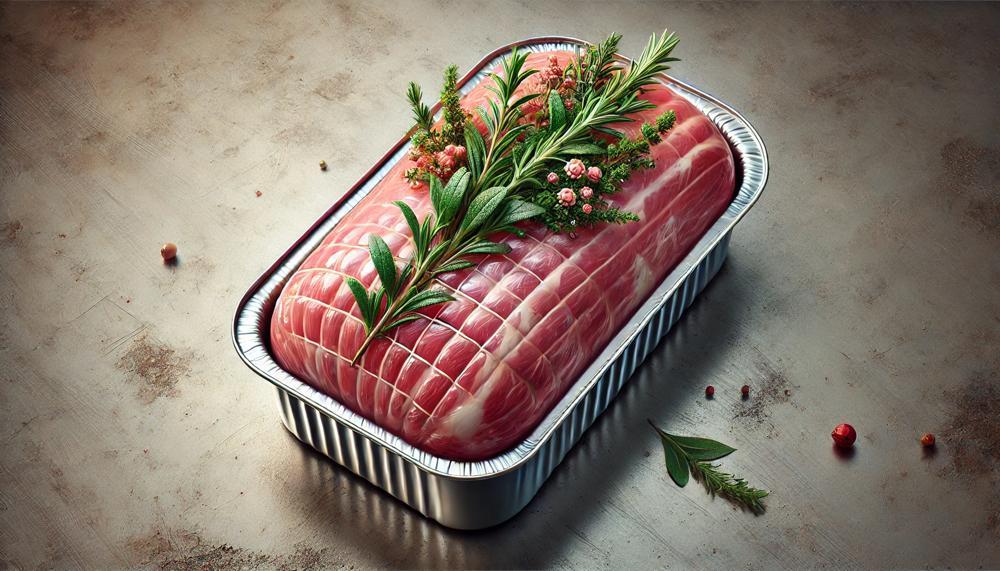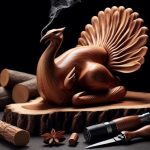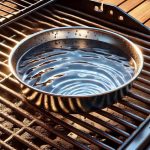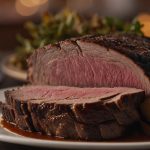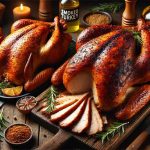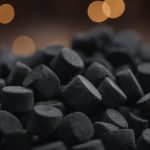Have you ever planned the perfect barbecue, only to discover that your bag of Kingsford charcoal has gotten wet? The frustration can be real, but understanding what happens next can help salvage your grilling plans.
When Kingsford charcoal becomes wet, several challenges arise that could impact your cookout:
- Lighting Difficulty: Wet charcoal is notoriously hard to light. The moisture it absorbs inhibits its ability to catch fire, requiring more effort and potentially more lighting agents, like lighter fluid, which could affect the taste of your food.
- Increased Smoke and Faster Burnout: Once lit, wet charcoal tends to produce more smoke. This is not only unpleasant but can also be a health hazard if not managed properly. Moreover, it tends to burn out quicker than dry charcoal, disrupting the cooking process by requiring frequent replenishments.
- Drying Challenges: While you might think of drying out the wet charcoal, this is not always straightforward. Placing wet charcoal in the sun might seem like a viable solution; however, some types of charcoal may just crumble and become useless after attempting to dry. It’s a delicate process that does not always guarantee restoration of the charcoal’s original quality.
- Performance Issues Post-Drying: Even successfully dried charcoal might not perform as well as it did before getting wet. Its ability to hold an even temperature is often compromised, which is critical for cooking food evenly.
- Mixed Solutions: A practical tip for partially salvaged charcoal is mixing it with fresh, dry charcoal. This mixture can help balance out the performance, leading to a more consistent burn and better overall results.
- Preventative Measures: The best approach is proactive; store your charcoal in an airtight, waterproof container rather than relying on the original packaging, which seldom provides adequate protection against moisture.
Understanding these points will help you manage your expectations and preparations, ensuring that a little water doesn’t dampen your entire barbecue experience.
Contents
Can Charcoal Get Wet?
Yes, charcoal can indeed get wet. However, this affects its usability for grilling purposes. When charcoal absorbs moisture, either from rain or high humidity, it becomes challenging to ignite and may not burn as intensely or consistently as dry charcoal. If you find your charcoal has gotten damp, it’s essential to dry it out before attempting to use it for grilling.
| Condition | Effect on Charcoal | Recommendation |
|---|---|---|
| Light Moisture | Difficult to light, might produce excessive smoke | Spread on a baking tray and dry in the sun |
| Heavily Saturated | May not light at all and could burn out quickly if it does | Consider discarding or mixing with fresh charcoal |
| Storage | Moisture absorption from air | Store in an airtight, waterproof container |
If your charcoal has only been slightly dampened, laying it out on a sunny day on a flat surface like a baking tray or spread out on paper can help restore its dryness. However, if the charcoal is thoroughly soaked, it often loses its effectiveness completely.
In this case, it might be best to mix whatever you can salvage with fresh, dry charcoal to help ensure it burns more evenly. To avoid this problem in the future, always store your charcoal in an airtight, waterproof container rather than relying on the original packaging, which may not provide adequate protection from moisture.
How Does Charcoal Get Wet?
Charcoal absorbs moisture primarily through exposure to wet conditions, such as rain or high humidity environments. This occurs when charcoal is left unprotected outdoors or stored in damp places without adequate shielding from moisture. Here’s a detailed look at how charcoal can end up getting wet:
- Exposure to Rain: If charcoal is left outside without cover, rainfall can soak it thoroughly.
- Humid Conditions: Storing charcoal in areas with high humidity can cause it to absorb moisture from the air.
- Improper Storage: Charcoal stored in non-waterproof containers or bags that are not fully sealed will likely become damp over time due to moisture seepage.
Wet charcoal is problematic for grilling because it lights with difficulty, burns inefficiently, and produces more smoke due to incomplete combustion. The table below outlines some key points about the impact of moisture on charcoal and effective storage tips:
| Problem | Effect | Solution |
| Moisture Absorption | Hard to ignite, smoky, and quick to burn out | Store in waterproof, airtight containers |
| Humid Storage Conditions | Charcoal absorbs ambient moisture | Use desiccants or store in low-humidity environments |
| Exposure to Rain | Charcoal becomes soaked and may crumble | Keep charcoal covered or indoors |
For charcoal that has become wet, drying it out in the sun can sometimes restore its functionality, although this doesn’t always return it to its original burning quality. Mixing slightly damp charcoal with dry pieces can help balance the burn during use.
Always ensure to keep charcoal in dry, well-ventilated conditions, ideally in a container that blocks moisture effectively to prevent these issues.
Does Wet Charcoal Go Bad?
Yes, wet charcoal can go bad. When charcoal, especially briquettes, becomes wet, it absorbs moisture which compromises its ability to light and burn effectively.
This soaked charcoal often struggles to ignite, burns with excessive smoke, and extinguishes more quickly than dry charcoal. Here’s what you need to know:
- Moisture Impact: Moisture seeps deep into the structure of the charcoal, particularly with briquettes, which are densely packed and prone to retaining water.
- Ignition and Burn Quality: Wet charcoal is notoriously difficult to light and may require more lighter fluid or attempt to ignite. Once burning, it tends to produce a lot of smoke and burns out faster, indicating incomplete combustion.
- Salvage Possibilities: While drying out wet charcoal in the sun might seem like a solution, it rarely restores it to its original condition, leading to inefficient burning and potential waste.
For those who enjoy grilling, here’s a table summarizing the effect of moisture on different types of charcoal and tips on handling them:
| Type of Charcoal | Effect of Moisture | Handling Tips |
| Briquettes | Highly susceptible, absorbs moisture deeply, hard to light | Store in airtight containers; try drying in the sun, though effectiveness is limited |
| Lump Charcoal | Less susceptible than briquettes, but still affected by moisture | Keep in dry places, use desiccants to manage humidity |
How To Salvage Wet Charcoal
When grappling with the challenge of wet charcoal, particularly for those keen on grilling, there are several practical steps you can take to restore its usability.
The effectiveness of these methods can depend on the extent of dampness and the type of charcoal.
Air Drying:
Spread the wet charcoal in a single layer on a dry, flat surface such as a baking tray. Position this in a sunny spot or a well-ventilated area. Sunlight not only dries but also helps in dispelling some of the damp smells.
Oven Drying:
For quicker results, you can dry charcoal in an oven. Set the oven to a low temperature (around 110°C) and place the charcoal spread out on a tray.
Keep the oven door slightly open to allow moisture to escape. Monitor regularly to prevent any charring.
Using a Chimney Starter:
Employ a chimney starter with a mixture of damp and dry charcoal. Insert crumpled newspaper at the bottom and light it. The heat will help dry out the damp charcoal as it helps ignite the dry pieces.
Mixing with Dry Charcoal:
Combine equal parts of wet and dry charcoal in your grill. The dry pieces will aid in igniting the wet ones and help maintain a more consistent burn.
Indirect Grilling:
Use wet charcoal for indirect cooking methods, such as smoking. The lower temperature and longer cooking time can accommodate the dampness better than direct grilling methods.
Briquettes vs. Lump Charcoal
| Characteristic | Briquettes | Lump Charcoal |
| Composition | Compressed sawdust and other materials with binders | Pure hardwood |
| Burning Temperature | Burns evenly, produces consistent heat over a longer period | Burns hotter and faster |
| Density | More dense, takes longer to burn | Less dense, burns quickly |
| Environmental Impact | More additives, higher emissions | Cleaner, less environmental impact |
| Cost | Relatively inexpensive | More expensive |
| Usability | Easy to light, consistent performance | Requires more control, higher skill level |
| Performance When Wet | More resistant to moisture, takes longer to dry but usable once dried | Highly susceptible to moisture, difficult to ignite unless thoroughly dried |
Impact of Getting Wet
Moisture Resistance:
- Briquettes: Due to binders like starch or molasses, briquettes show greater resistance to moisture. These binders help briquettes maintain structure and usability after drying out.
- Lump Charcoal: Pure hardwood composition makes lump charcoal more prone to moisture absorption. Once wet, it struggles to ignite and burn efficiently.
Reusability After Getting Wet:
- Briquettes: While they take longer to dry, briquettes remain usable after thorough drying. The binders assist in preserving their integrity.
- Lump Charcoal: Lump charcoal, however, requires meticulous drying. Any retained moisture hampers its ability to ignite and burn properly.
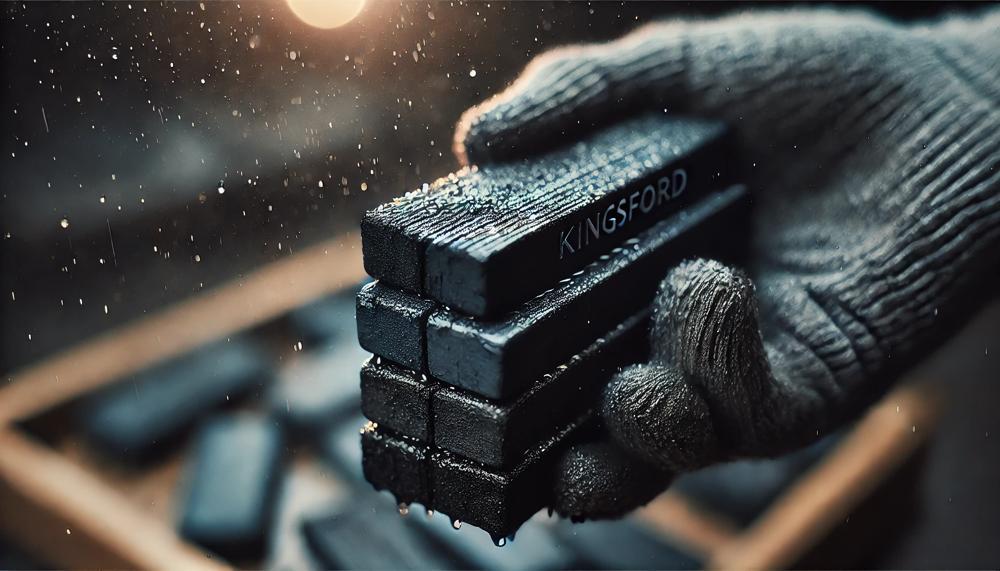
How To Use Dried-Out Charcoal
To effectively use dried-out charcoal, follow these steps to ensure optimal grilling experience:
- Assessing Dryness: Check the charcoal for any excess moisture and crumbled pieces. Ensure it’s dry enough for use by inspecting its texture and handling.
- Sun-Drying Method: Place the charcoal on a baking tray or paper under direct sunlight for several hours. This helps evaporate residual moisture and restore usability.
- Quality Check: Examine the charcoal post-drying. If it smokes excessively or struggles to ignite, its effectiveness may be compromised.
- Mixing for Consistency: Combine dried-out charcoal with an equal amount of fresh charcoal to balance burning consistency and enhance performance.
- Storage Precautions: Prevent moisture absorption by storing charcoal in a waterproof, airtight container. This preserves its quality for future use.
By following these steps, you can salvage dried-out charcoal effectively, ensuring a reliable grilling experience without compromising on flavour or performance.
Tips on Keeping Charcoal Dry
Storage Solutions
Store your charcoal in a dry, elevated location away from ground moisture. A garage shelf or a storage shed are ideal spots. If these areas have humidity issues, consider using a dehumidifier to maintain a dry environment.
Protective Containers
Use airtight, waterproof containers to store your Kingsford charcoal.
Re-sealable plastic bins or commercial storage boxes designed for outdoor use can effectively shield charcoal from moisture.
Cover and Shelter
Avoid storing charcoal bags directly on the floor, especially in damp areas. Place them on pallets or shelving units. If kept outside, ensure the charcoal is covered with a waterproof tarp and secured against wind and rain.
Sunlight Precautions
While sunlight can help keep things dry, direct exposure can degrade the quality of charcoal.
Store charcoal in a location that avoids prolonged direct sunlight.
Charcoal Management Post-Grill
After grilling, separate unburned charcoal from ash. Store unused, cooled charcoal back in your dry storage solution for future use. This prevents wasted charcoal and maximizes your grilling resources.
Mixing Strategy
For damp charcoal that has been dried but may not perform optimally, mix it with an equal portion of fresh, dry charcoal.
This can help in achieving more consistent burn times and heat during your grill sessions.
Regular Checks
Regularly check your storage area and containers for signs of moisture entry or charcoal degradation. Replace any compromised containers or relocate your storage if necessary.
Conclusion
When Kingsford charcoal encounters water, it embarks on a precarious journey, complicating your barbecue ambitions. Here’s what unfolds: The absorbed moisture transforms this grilling staple into a stubborn fuel that resists ignition, demands more lighter fluid, and smokes excessively upon lighting. This can lead to an uneven cooking experience and might even cut your cookout short as the charcoal burns out quickly.
If you find your charcoal dampened by rain or humidity, it’s not all gloom. You can attempt to restore its fiery spirit by spreading it out under the sun or employing a low-heat oven. However, it’s vital to recognize that even these methods might not resurrect the charcoal to its prime condition. To meld the old with the new, consider combining slightly damp charcoal with fresh batches to even out the burn rate.
To keep the fiery blues at bay, proactive storage in airtight, waterproof containers is your best safeguard, keeping your Kingsford charcoal dry and grill-ready. This approach ensures that your grilling plans remain unspoiled, letting you sizzle steaks rather than fumbling with soggy charcoal.

